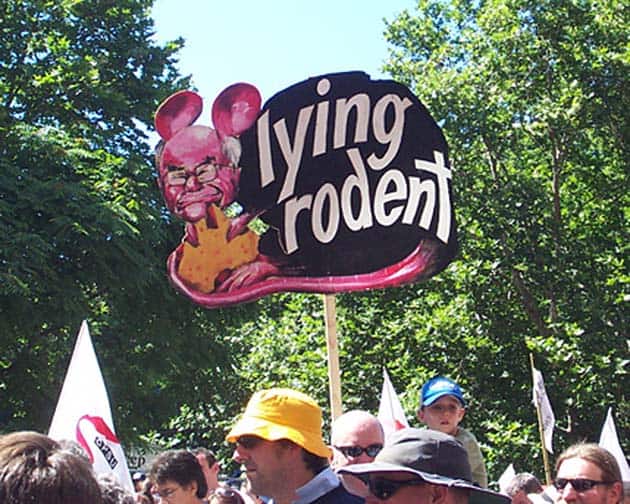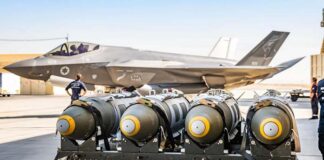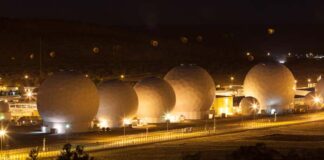The Howard government had a ruthless class agenda, writes David Glanz, but it was Labor’s timid opposition that kept it in power.
History records that John Howard’s Liberals won government 20 years ago, on 2 March, 1996.
According to the media, the result was a rejection by large chunks of the working class—the so-called “Howard’s battlers”—of political correctness.
Hurt by the recession of the early 1990s, more and more workers were “aspirational” and had turned their backs on old Labor values.
The political reality, however, is that the election was not won by Howard but lost by Labor, with workers punishing the ALP for 13 years of neo-liberal attacks.
Some 55 per cent of those voting Liberal in 1996 did so because they disliked the other parties—just 39 per cent backed the Coalition because they liked them.
As Queensland Labor premier Wayne Goss put it in the run-up to the election, voters were “sitting on their verandas with baseball bats” for their chance to punish Paul Keating’s government.
Under Bob Hawke and then Keating, Labor had privatised the Commonwealth Bank and Qantas, ended free tertiary education, taken Australia into the first Gulf War and given voters, in Keating’s words, “the recession we had to have”.
Keating had survived the 1993 election only because Liberal leader John Hewson had campaigned for a 15 per cent GST, the end of bulk billing, severe restrictions on access to the dole and $10 billion in cuts.
On election day 1996, the Liberal and National coalition won 94 seats to Labor’s 49. Three ministers lost their seats.
Goss could not be accused of being out of touch—as the results rolled in, the ALP retained just two seats in Queensland.
The common perception was that Howard had won by avoiding Hewson’s mistakes—making himself a small target, promising “unity” and good government and undertaking to maintain Medicare and environmental policies.
But Howard had his own neo-liberal agenda. In a speech on February 18, he pledged to bring in individual workplace agreements, to oppose compulsory union membership and to attack what he called “rigidities”—what workers would call hard-won conditions.
He was already committed to privatising Telstra, but threw in a capital gains tax cut for small business for good measure.
Significantly, the Liberal campaign was fought under the slogan “For all of us”—a dog whistle to those concerned about the impact of the High Court decision in 1992 to recognise Aboriginal native title (the Mabo case).
Howard was also talking in code to those who had welcomed his call in 1988 to reduce Asian migration and to end multiculturalism.
On election night, Howard claimed a clear mandate and he moved quickly to enforce it, passing the Workplace Relations Act within months.
Provisions included individual contracts, reduced access to workplaces for union organisers, the ability for employers to seek injunctions against industrial action, enterprise level bargaining and all-staff ballots.
But the most important initiative within the WRA was the concept of protected industrial action.
Previously, unions could, in theory, be sued for damages arising from industrial action—but in practice, workers were free to take action how and when they wanted without them or their officials being sued.
The Liberals offered the trade union bureaucracy a carrot and a stick. So long as workers had voted in a ballot, unions could take protected industrial action within a defined period of bargaining.
But the new law allowed employers to go directly to a judge for damages if action happened without a ballot or outside the protected period.
The penalties written into the WRA threatened the assets of the unions much more than those of individual union members. This was because the Liberals’ main aim was to intimidate union leaders into inactivity.
Howard did not get it all his own way. The number of working days “lost” in 1998 was still 524,900—a significant figure compared to the 80,900 days of action in the year to September 2015.
But in general, Howard and his Workplace Relations Minister, Peter Reith, were successful in intimidating most union officials into limiting or preventing industrial action that could see them lose their offices, cars or branch bank accounts.
The election night talk of “unity” was quickly forgotten.
Instead, as Reith put it: “Never forget the history of politics. And never forget which side we’re on. We’re on the side of making profits. We’re on the side of people owning private capital.”
Howard’s other major initiative in 1996 was a major round of cutbacks. He declared that Labor had left a $7.6 billion budget “black hole” and responded by breaking what he called “non-core promises”.
Public service and university jobs were slashed, the Commonwealth Employment Service was privatised, students’ HECS was increased, and cuts were made to all departments except defence.
The Liberals’ first two budgets reduced spending by $8 billion.
Racist scapegoating
Broken promises, cutbacks, attacks on workers, even a run of ministerial resignations—Howard needed a strategy to deflect people’s angry response. He turned to his favoured weapon … racism.
Racist scapegoating under Howard took a variety of forms. His first act was to cut migration—particularly family reunion, which was seen as a bid to limit the arrival of relatives of the Chinese marooned in Australia by the 1989 Tiananmen Square massacre.
Then came the attack on the so-called “Aboriginal industry”, falsely claiming that the national Aboriginal organisation was corrupt.
Most damagingly, he refused to condemn the newly elected Pauline Hanson, whose maiden speech to parliament in September 1996 unleashed a tidal wave of racism and led to the establishment of the One Nation Party.
At every step of the way, Howard made sure that the “debate” continued. He encouraged the racists with nod-and-a-wink comments about “free speech”.
At the same time he attacked what he called the “black armband” view of history, meaning any attempt to recognise the attempted genocide of Aboriginal people. He refused to issue a government apology for two centuries of institutionalised racism.
Howard was re-elected in 1998 but the Coalition vote dropped 8 per cent and Labor even won a majority of the two-party preferred vote. The looming introduction of the GST, the impact of budget cutbacks and the bitter Maritime dispute (to be discussed below) had taken their toll.
Howard moved to buttress his position by attacking asylum-seekers. A mere 8000 arrived by boat between 1999 and mid-2001, but it was enough to allow the Liberals to posture as the defenders of the nation’s borders.
In August 2001, the government instructed a Norwegian freighter, the Tampa, not to bring asylum-seekers rescued in international waters into Australian waters. When it did, Howard ordered the ship to be boarded by Australian special forces.
Almost immediately, the government introduced border protection legislation and launched the “Pacific Solution”, sending asylum-seekers to Nauru.
In the midst of this fear campaign, the 9/11 attacks presented Howard with the perfect opportunity to pose as the champion of national security. On October 5, he called an election.
Just two days later, the government falsely claimed that a group of asylum-seekers intercepted by an Australian warship had thrown their children overboard.
In this fevered atmosphere, Howard made the defining statement of the election: “We will decide who comes to this country and the circumstances in which they come …”
From having faced defeat according to opinion polls in early 2001, Howard won the November election with one of the biggest swings towards a sitting Australian government.
Buoyed by this, Howard took Australia into two wars, first in Afghanistan and then, in 2003, in Iraq, revelling in his role as cheerleader for the two main warmongers, US President George W Bush and British Prime Minister Tony Blair.
Failure of opposition
As already noted, Labor won the popular vote in 1998. But it was to be another nine years before it could repeat that feat. In between, it made Howard’s life much easier by ceding key political ground.
Labor leader Kim Beazley soft-pedalled on Howard and Hanson’s racism. When the NSW Labor secretary called Howard a racist, Beazley responded: “He can use his own words. I don’t go down the road of characterising John Howard like that.”
The ALP’s assessment of its 1996 defeat noted “a deep uneasiness about some aspects of multiculturalism”. Its response was to go quiet.
On the industrial front, Labor opposed aspects of the WRA but pledged to leave the core of the legislation intact.
Labor defeated the first attempt at border protection legislation in 2001 in the Senate. Howard labelled Beazley as having “no ticker” and Labor’s resistance promptly collapsed. They passed amended legislation and supported the invasion of Afghanistan.
If it had been left to Labor, the Liberals would have had it easy. But from the earliest days of the Howard government, resistance from below began to grow.
The first line of resistance was to Hanson’s One Nation. Thousands marched, picketed and handed out how-to-vote cards.
The turning point was the attempt by the Patrick Corporation stevedoring company to break the Maritime Union of Australia.
The Howard government stood firmly behind Patrick. When former soldiers were recruited as scabs in late 1997 in an aborted plan to send them to Dubai to train as waterfront workers, the government expedited passports.
Patrick locked out its workforce at Webb dock in Melbourne at midnight on 28-29 January and, on 7 April, in response to rolling MUA national action, locked out its national workforce before sacking them.
It was a carefully choreographed operation, openly backed by the Liberals and the National Farmers Federation.
It was revealed that Patrick was hiring its workers through shell companies that had no assets. On April 8, Reith helpfully introduced legislation to pay wharfies their redundancy.
Workers responded quickly and strongly in response to this conspiracy. There were regular mass pickets, first at Webb dock and then at all Patrick operations, particularly in Melbourne, Sydney, Brisbane and Fremantle.
Most picket lines were banned by court injunctions, but the numbers there continued to grow, state Labor MPs and ACTU secretary Bill Kelty among them.
By mid-April, the dispute was on a knife-edge.
The MUA and ACTU were conducting a legal campaign (while offering up cuts to wharfies’ conditions). Fear of the WRA and being sued for damages meant the MUA would not shut the waterfront by pulling out its members at P&O, the other major stevedoring company.
On the other hand, unionists and community activists were blockading all Patrick operations. Well-organised workplaces began to send delegations. There was a real sense that a general strike was possible if the call came from the top of the movement.
On the night of 17-18 April, the police made it clear they intended to break the picket at East Swanson dock in Melbourne—the biggest Patrick operation in the country. The Liberal Police Minister threatened a bloodbath.
Three thousand MUA supporters held the gate all night, packed like a cork in a bottle between the gate and cyclone fencing on either side of the road. At dawn the police advanced, then hesitated in the face of mass defiance.
The stand-off ended when Victorian Trades Hall Council pulled construction workers arriving on a nearby project off the job and marched them down to the dock.
The police were trapped and surrendered to Trades Hall secretary Leigh Hubbard. They marched away, removing their caps to show they were no longer on active duty.
It was a famous victory for the union movement and led, in practice, to a legal win a fortnight later in the High Court.
The dispute ended in an unnecessary economic defeat—concessions by MUA members at Patrick that were a result of the officials’ unwillingness to confront the WRA head-on.
But in the view of most non-wharfies, the outcome was a resounding political victory. As the chant went, the MUA was indeed here to stay. Howard would not try another frontal assault on a union.
A year later, the mood of growing defiance could be seen in spontaneous working day rallies in support of East Timor.
And the following year, 2000, saw another significant highpoint when 10,000 people from around the country surrounded Crown Casino in Melbourne for three days from September 11 (or S11) to blockade a meeting of the World Economic Forum.
Howard had to scuttle in by boat.
On the second day, Trades Hall led a march of thousands of Melbourne workers to the blockade in solidarity.
The refugee solidarity movement was growing throughout this time, culminating at Easter 2002 in 1000 people gathering outside Woomera detention centre in outback South Australia.
Encouraged by this support, detainees tore down the fences and dozens escaped into the desert. Woomera was shut the next year. The 2007 Kevin Rudd government was to meet most demands raised by the movement.
In 2003, perhaps a million Australians marched in the world’s biggest protest yet—against the invasion of Iraq.
It was a mobilisation made necessary by the lies of our rulers, not least Howard, and made possible by the preceding five years of struggles.
Howard squeaked back into office in 2004, helped by a rising economy and a bomb blast in Jakarta during the election campaign, which re-emphasised the topic of national security.
For the first time, Howard also gained a majority in the Senate. He saw this as an opportunity to complete unfinished anti-union business (he had been forced to abandon a toughening up of the WRA in 1999). The result was the WorkChoices legislation.
Howard’s arrogance was to bring him undone. The Liberals had been careful in drafting the WRA in 1996 to hobble the union bureaucracy and the militants around them. Workers who had little experience of industrial action were not deeply impacted.
WorkChoices, on the other hand, put a weapon to the head of every worker. It removed unfair dismissal rights from those in workplaces under 100 and removed the “no disadvantage” test on AWAs. This meant workers could be pushed on to inferior individual contracts with no way to resist.
The ACTU organised a huge “your rights at work” campaign, focused on getting Labor elected. But others wanted to go further and there were mass political strikes and protests. In Melbourne, 150,000 strikers marched.
The campaign finally broke the Howard government’s back. The Liberals were thrown out of office on 24 November 2007.
Howard became only the second Australian Prime Minister to lose his seat.
Rotten legacy
Howard was a class struggle conservative in the spirit of Britain’s Margaret Thatcher. He hoped to pull Australian society firmly to the right.
Did he succeed? In some respects, yes. He reinforced the neo-liberal agenda launched by Hawke and Keating. Today, the logic of the market still totally dominates official politics. The Fair Work Act has inherited the core of the WRA.
He also reinforced Australia’s role as deputy sheriff of US imperialism, laying the basis for today’s Islamophobia. Australian troops are still in Afghanistan and Iraq today.
He created a mass demonisation of asylum seekers and injected racism deep into Australian society. And he pioneered the racist Northern Territory intervention, aimed at breaking up Aboriginal communities and resistance.
In all of this he was aided, during his time in office and after, by Labor either endorsing Howard’s positions or offering a pale alternative.
But in other regards, Howard failed and he did so because of sustained mobilisations from below.
The union movement has been weakened, but is still the largest organised movement in the country. The refugee movement is once again on the rise.
The mainstreaming of environmental common sense, the upswell of support for same-sex marriage, and the opinion polls that show many voters to the left of Labor on questions of social and economic equality—all these are signs of the Howard agenda’s shallow roots.






